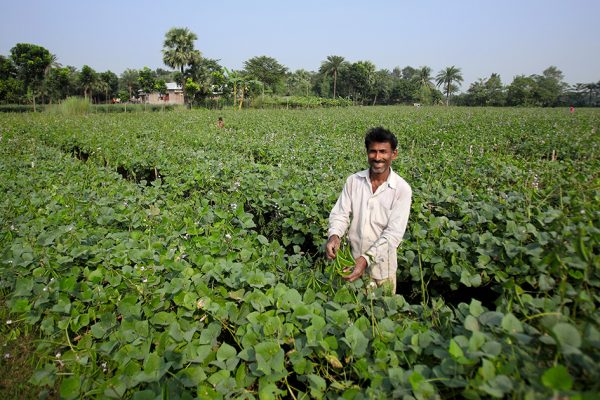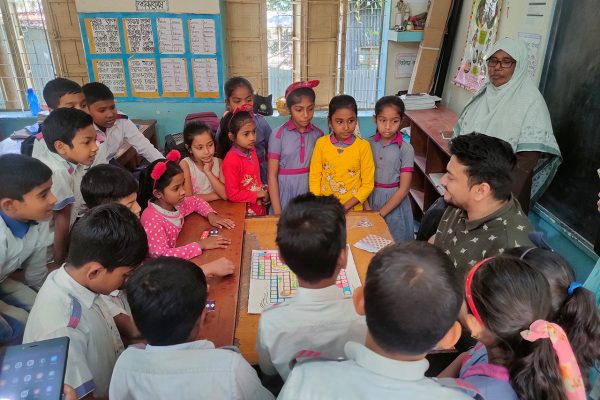Comparing branchless banking in Bangladesh and Pakistan
Reading Time: 5 minutes
Bangladesh is a recent entrant into branchless banking – deployments only began in earnest in the middle of 2011. CGAP reviewed the first year of branchless banking (referred to as “mobile financial services” in Bangladesh) together with Bangladesh Bank up to March 2012.
The following article was posted on CGAP’s website by Greg Chen on 06 June 2013.
Bangladesh is a recent entrant into branchless banking – deployments only began in earnest in the middle of 2011. CGAP reviewed the first year of branchless banking (referred to as “mobile financial services” in Bangladesh) together with Bangladesh Bank up to March 2012. At that time, Bangladesh had only a year’s worth of experience, but in its second year up through March 2013 Bangladesh has made an 8-fold jump in accounts and agents. What can be learned from benchmarking Bangladesh to the regional leader Pakistan which had begun two years earlier in 2009? Both have similar populations, mobile penetration and income levels making the comparison even more interesting.
First, consider supply numbers. We use the latest figures by the State Bank of Pakistan for the fourth quarter of 2012 (quarterly reports on Pakistan) to compare with figures provided by Bangladesh Bank for the first quarter of 2013. Many thanks to the State Bank of Pakistan and Bangladesh Bank for providing detailed explanations of these figures.

Photo Credit: Mohammed Rakibul Hasan
The best measures of total supply come from the volume of client transactions. Total transaction value in Pakistan is $1.5 billion but this includes $646 million of back-end agent liquidity management transactions. Removing these leaves the total client transaction volume at $879 million. This is a more comparable figure to the $1,030 million client transaction volume in Bangladesh.
Latest Data from Central Banks (*includes only client accounts)
|
Bangladesh (Jan – Mar 2013) |
Pakistan (Oct -Dec 2012) |
|
| Transaction Value per quarter ($US millions)* |
1,030 |
879 |
| Transactions per quarter (millions)* |
33.8 |
34.3 |
| Average Transaction Size ($US)* |
31 |
26 |
| Agents end of quarter (000s) |
71 |
42 |
| Accounts end of quarter (millions)* |
4.6 |
2.1 |
Transaction numbers and average size are also similar. Bangladesh’s 4.6 million wallets is more than double Pakistan’s figure, but this is a bit misleading. EasyPaisa, the largest mobile money service in Pakistan, has 5 million users, but of these 4 million do not have mobile accounts. The gross figures also do not capture that Pakistan provides a wider range of utility bill pay, G2P and other services (airtime top-ups are not a large proportion for either country).
However, on sheer volume Bangladesh’s infrastructure of agents and accounts has surged. The quarterly figures reveal that Bangladesh appears to be growing faster; transaction values quarter-over-quarter grew by 7% for Pakistan versus 57% for Bangladesh.
The Bangladesh growth is driven primarily by bKash, a subsidiary of BRAC Bank, which accounts for 80% of market share by several measures. But Dutch Bangla Mobile is also on a steep growth trajectory. Bangladesh’s largest private bank – Islami Bank – just launched MCash which is poised to make a large contribution.
This growth has put Bangladesh onto a scale and trajectory close to that of Pakistan. It is less important at any point in time which is bigger or growing faster, as both markets today are among the global leaders. It is more insightful to learn from a comparison between the two.
What common factors contribute to the rapid scaling in Bangladesh and Pakistan?
One commonality is that providers are large companies expecting to make large investments. In Bangladesh, BRAC Bank (majority owner of bKash), Dutch Bangla Bank and Islami Bank are among the leading retail banks. In Pakistan Tameer/Telenor’s EasyPaisa, United Bank’s Omni, Mobilink’s MobiCash, Askari Bank’s TimePay and Habib Bank’s HBL Express have all large institutions behind them. CGAP estimates aggregate investment in Pakistan of $104 million so far. Another commonality is that there is one larger early provider generating most of the supply: EasyPaisa in Pakistan and bKash in Bangladesh.
Another commonality is that both Pakistan and Bangladesh leverage existing agent networks to gain scale. This has required adding on to existing ecosystems through local distributors. This leverages “middle men” who already distribute airtime or fast-moving consumer goods.
In both countries agents are non-exclusive. Early data from a Gates Foundation agent-mapping survey indicate that one-fifth of agents work for multiple providers in Bangladesh (though data collection is still in process). Estimates from Pakistan suggest the proportion may be a bit lower. Agent exclusivity has not been necessary to promote early scale. However, some in Pakistan hold that non-exclusivity of agents is slowing further expansion. In Bangladesh this has not been a topic of much discussion yet.
The largest uptake in Pakistan is from over-the-counter (OTC) transactions where senders and receivers remit through agent accounts. CGAP research and a snapshot survey by Pi Strategy Consulting indicate significant OTC uptake in Bangladesh too – probably more than half of all transactions are effectively OTC. A non-account OTC “token” initially offered by bKash has been taken out of service. However, transactions have shifted to another OTC approach: senders hand cash to an agent who transacts through a customer and agent account enabling the receiver to obtain cash at another agent location. These payments happen in 5-6 different ways as negotiated between agents and customers, but all transactions go through KYC-checked customer and agent accounts. Therefore, CGAP does not believe there ought to be regulatory concerns with this practice.
That said, OTC is a potential diversion for both Pakistan and Bangladesh. It falls short of customers independently using their own mobile accounts – a behavior that will improve client retention and open up the possibility of additional services. Providers in both Pakistan and Bangladesh recognize this and have their own business reasons to shift to direct customer mobile wallet use. It will be instructive to watch how both markets progress on this transition.
What are the key differences between Bangladesh & Pakistan?
The similarities are striking, but there are underlying differences as well. In Bangladesh the two leading providers have access to the USSD channels that can reach 90% of mobile subscribers. In exchange for USSD access MNOs typically receive 5-20% of revenues, but MNOs are not driving the business. Some hold that, under current regulation, MNOs in Bangladesh could play a more active role through partnerships but so far such partnerships have not been fully developed.
In Pakistan the two MNO deployments are only able to reach off-network subscribers with OTC services – contributing to the smaller mobile wallet figures. This points to another difference in Pakistan with more onerous account opening KYC requirements. Even the lowest-KYC accounts (level 0 and level 1) are less than half in number of what Bangladesh has reached in a shorter time span. Bangladesh’s visually confirmed voter identification card and paper account opening process facilitate faster account growth. Pakistan is also limited in the number of agents who can open accounts (only 27%) – no such limits in Bangladesh.
In Pakistan MNOs lead two services, EasyPaisa and MobiCash. Both naturally prioritize mobile wallets among their subscribers – a quite different flavor than Bangladesh. Besides these two, the other three large deployments in Pakistan are led by banks. The fact that there are 5 large players in Pakistan makes it a more competitive market. This has also led to some early discussions about inter-connecting services though it is now generally considered premature. In Bangladesh inter-connecting services has not been widely discussed, but may arise down the road.
Concerted government action in Pakistan to channel government payments (G2P) to citizens over branchless channels has been a significant motivator for large companies to enter. Bangladesh’s government is testing G2P delivered digitally including the Employment Generation Program for the Poorest (EGPP) with the World Bank. But the Bangladesh government has not committed to a government-wide shift which could generate even more interest from providers.
With only 2 and 4 years experience respectively, it remains early days for both countries. Yet it is not too early to suggest that other countries may do well to emulate much of the early progress we are witnessing in both Pakistan and Bangladesh.
—— The author is CGAP’s regional representative for South Asia.





